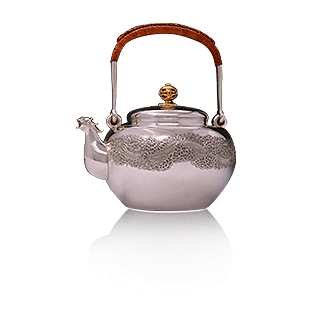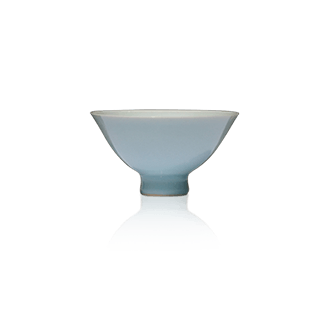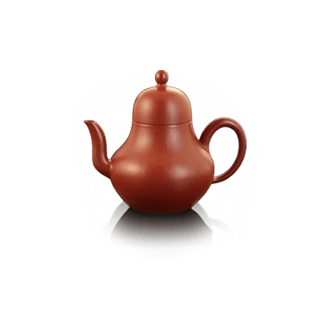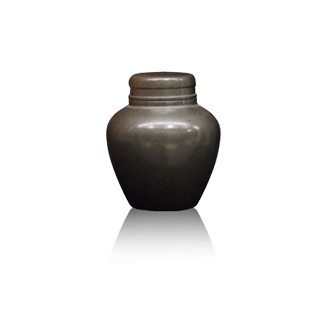
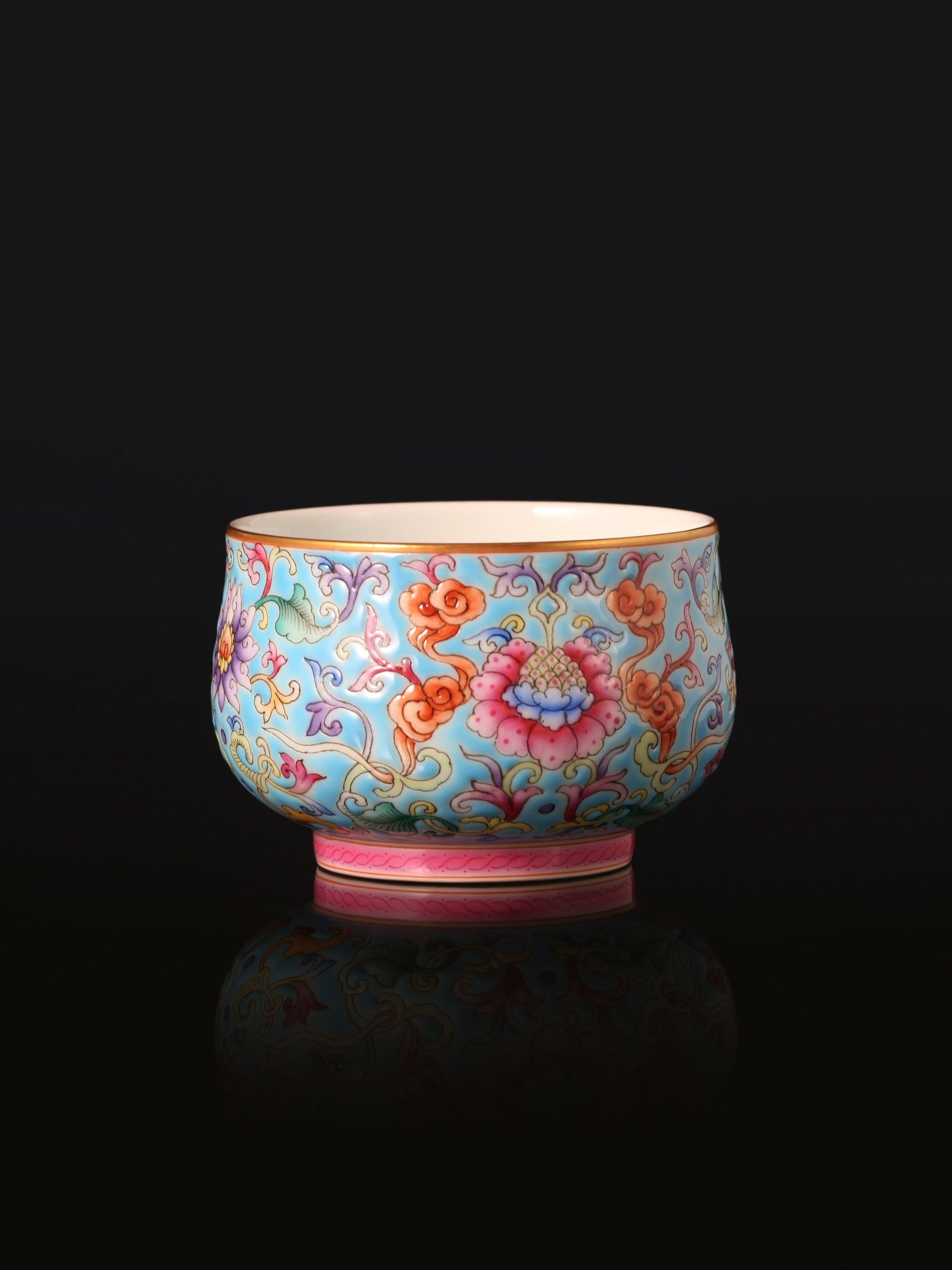

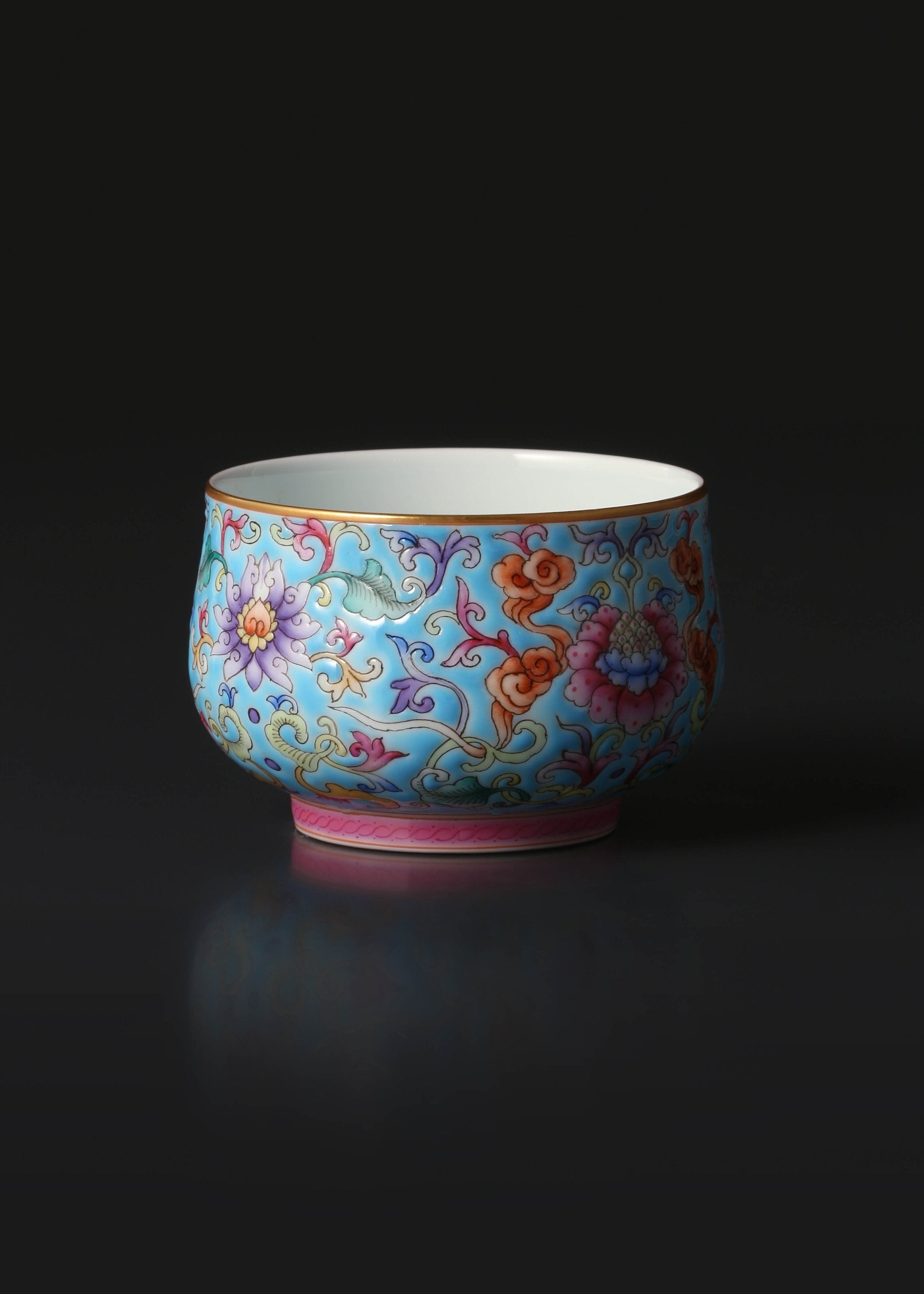


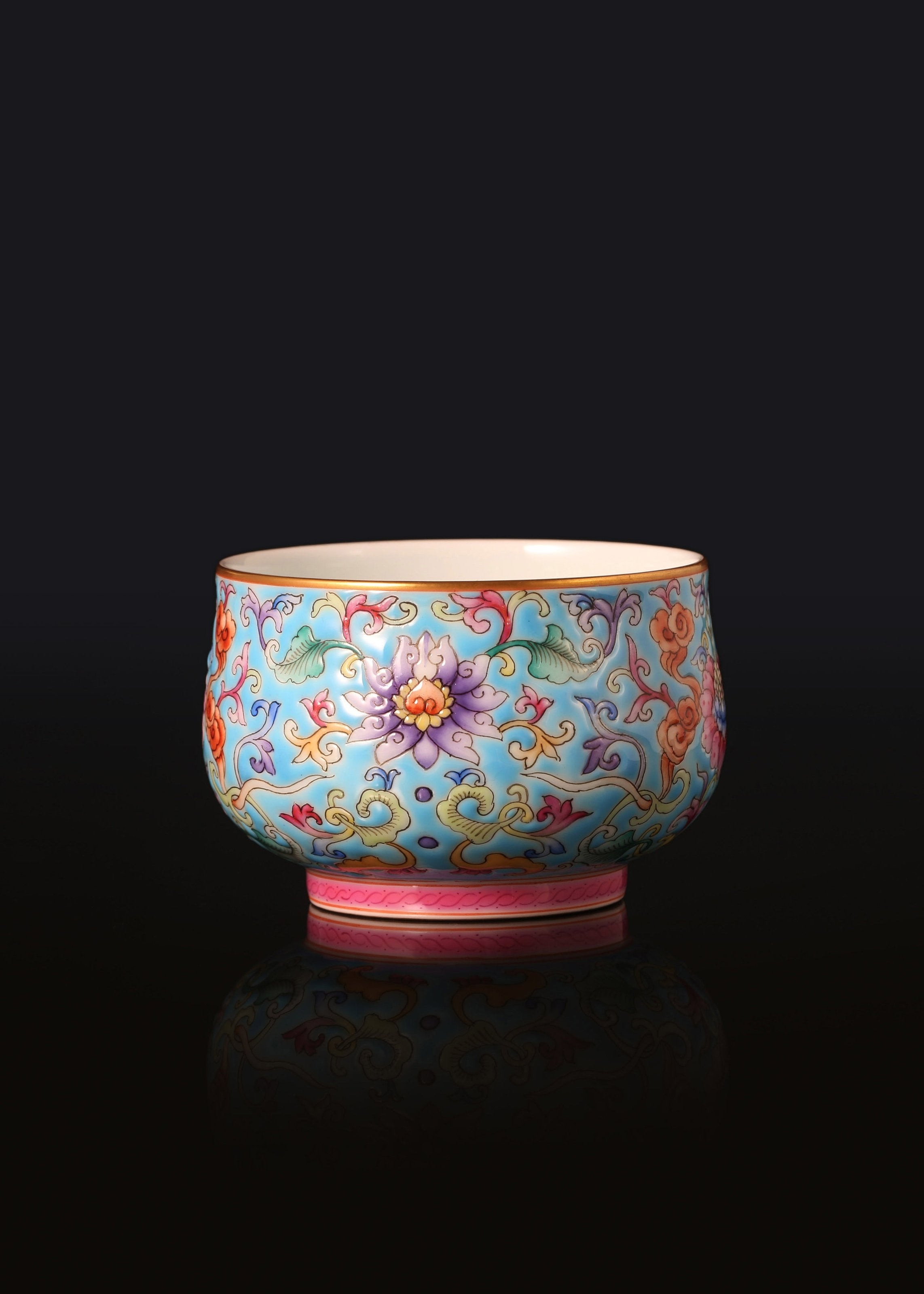
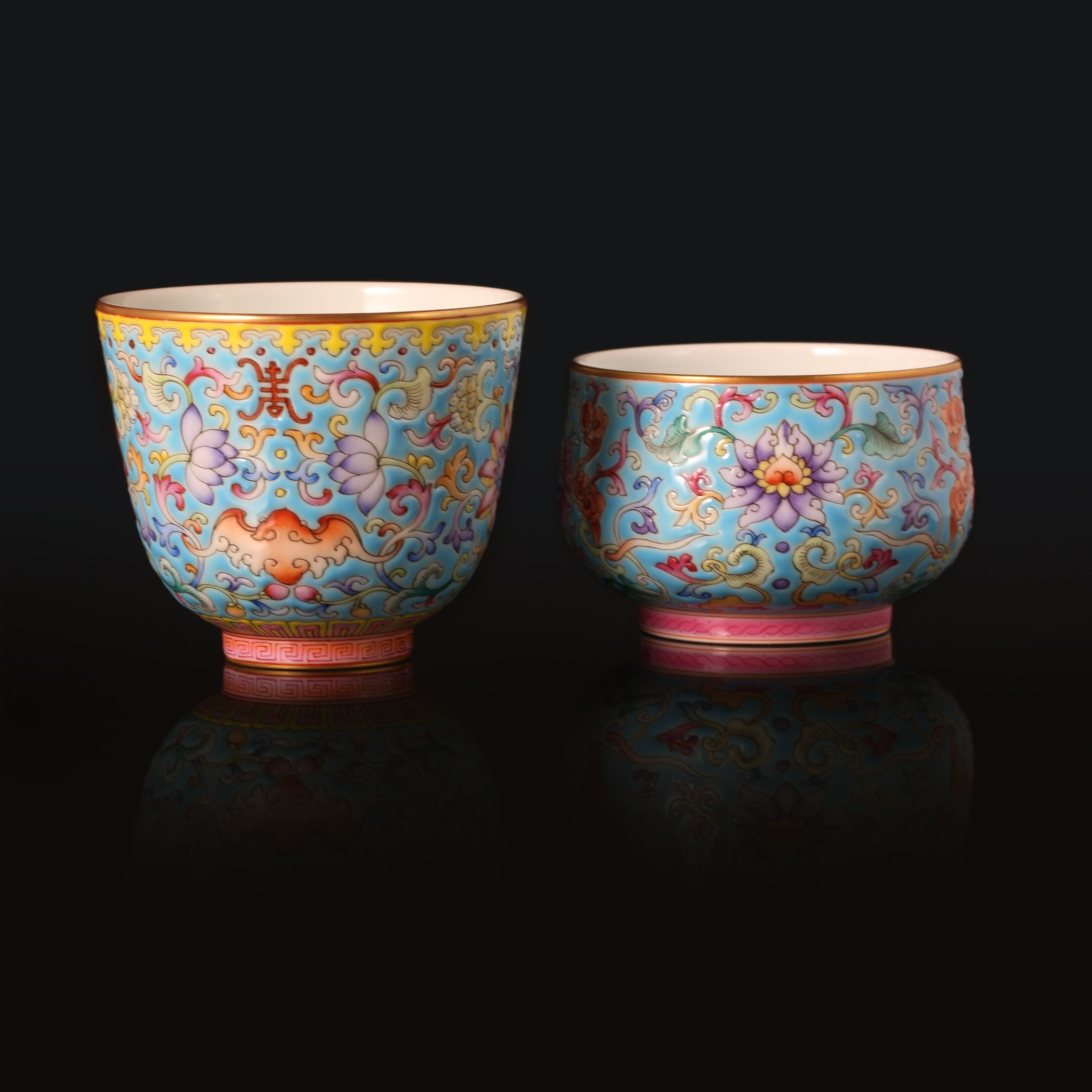

Dayazhai Enamel-Painted Luohan Cup with Entwined Lotus Flower Design











Dayazhai Enamel-Painted Luohan Cup with Entwined Lotus Flower Design
Dayazhai Enamel-Painted Luohan Cup with Entwined Lotus Flower Design
Dayazhai Enamel-Painted Luohan Cup with Entwined Lotus Flower Design
Vessel Type: Arhat Cup
Artist: dayatang
Material: Porcelain
Specifications: Rim Diameter: 6.9cm; Overall Height: 5.1cm
Vessel Type: Arhat Cup
Artist: dayatang
Material: Porcelain
Specifications: Rim Diameter: 6.9cm; Overall Height: 5.1cm
The enamel-painted Luohan cup with intertwined lotus flowers is a collaborative work by several masters, including Zhang Jian, a master of overglaze enamel and gold-painting techniques in Jingdezhen.
The term "Baoxiang" originates from Buddhism. It is a respectful term used by Buddhist believers to refer to the image of the Buddha. The Baoxiang flower is an ideal flower shape that represents purity, dignity, and beauty. The earliest mention of the term "Baoxiang" in my country can be traced back to documents from the Wei, Jin, and Northern and Southern Dynasties period. In the inscription on the stele of the Tuotuo Temple by Wang Jian of the Southern Qi Dynasty, it says: "Golden treasures and precious images, forever relying on leisure and peace, extinguishing the fire of the heart, and finally gathering in the world."
Although the "Baoxianghua" (宝相花) depicts flowers, it doesn't refer to a single flower shape. It's a pattern refined through artistic processing, existing in traditional Chinese culture like the dragon and phoenix, but not actually existing in reality. The "Baoxianghua" pattern incorporates elements from various flowers such as lotus, peony, and pomegranate, creating a radially symmetrical structure that expands outwards from the center, resulting in a nearly circular but relatively independent floral pattern. The Baoxianghua pattern can be used alone, combined with intertwined floral patterns to form intertwined Baoxianghua, or combined with scrolling grass patterns to create a complete Baoxianghua design.
The lotus flower pattern originated and flourished in the Tang Dynasty. The lotus flower pattern in the Tang Dynasty had a rich variety of petal details and was widely used. In particular, in the patterns of the Dunhuang Mogao Grottoes, it was used not only in the field of Buddhist art, but also in non-Buddhist fields such as brocade, gold and silver wares, bronze mirrors and porcelain.
The peony pattern inherited the aesthetic preference for fullness and plumpness of the Tang Dynasty and the characteristics of national art and culture. Its pattern is gorgeous and grand, which is highly favored by people. It has a profound influence on the decorative patterns of the Song, Yuan, Ming and Qing Dynasties. It has changed with the times, economic rise and fall, and social aesthetic perspectives, and has been used to this day.
During the Song Dynasty, the lotus flower pattern shifted from its opulent and extravagant style to a more regular and simpler one. This period also saw the emergence of the intertwined lotus flower pattern, characterized by its delicate composition, intricate designs, and more pronounced dynamism. The Yuan Dynasty fully reflected the rugged grandeur of nomadic peoples. Ming Dynasty lotus flower patterns were simpler and more relatable to everyday life. Qing Dynasty lotus flower patterns became increasingly elaborate and ornate, delicate and grand, with free and varied combinations of patterns, resulting in a more refined and sophisticated aesthetic.
Chinese traditional culture is highly inclusive, adept at incorporating beautiful elements from different ethnic groups and cultures, and then creatively designing content that meets its own needs and aesthetic values. The lotus flower pattern is a product of cultural fusion. It carries a rich and colorful cultural heritage within traditional Chinese auspicious patterns. Applying the lotus flower to porcelain is not only a discovery of beauty but also a spiritual expression of people's aspirations for good fortune.









Frequently asked questions
Use the FAQ section to answer your customers' most frequent questions.
Order
Yes, we ship all over the world. Shipping costs will apply, and will be added at checkout. We run discounts and promotions all year, so stay tuned for exclusive deals.
It depends on where you are. Orders processed here will take 5-7 business days to arrive. Overseas deliveries can take anywhere from 7-16 days. Delivery details will be provided in your confirmation email.
You can contact us through our contact page! We will be happy to assist you.





